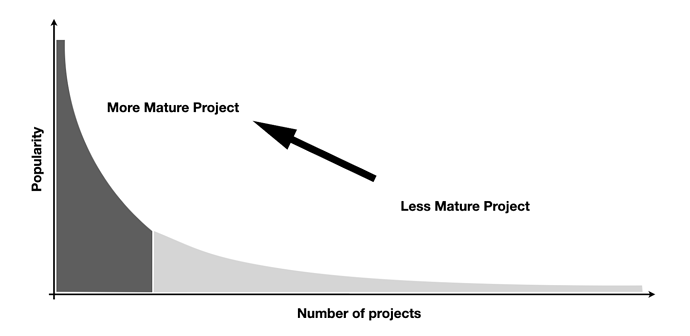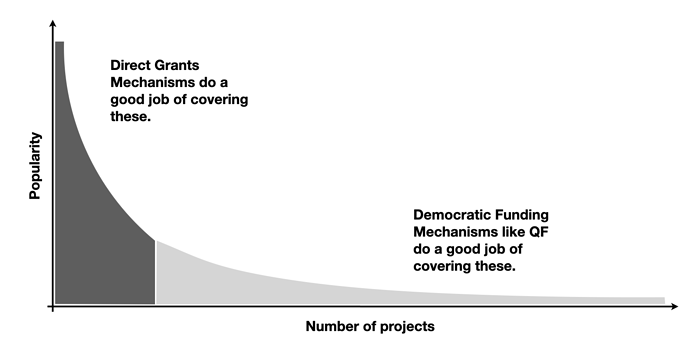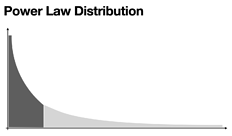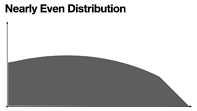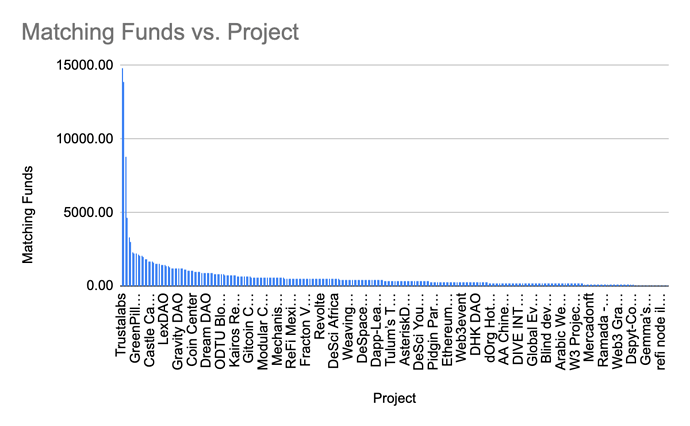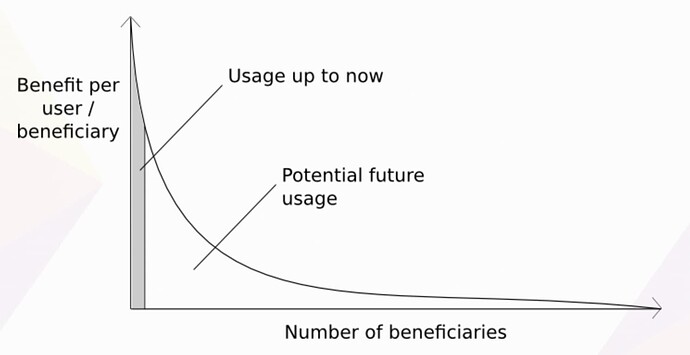TLDR
Like many economic systems, distributions of funding in the crypto ecosystem often follow a power law distribution.
Because crypto crowdfunding tools have created an opportunity for unknown projects to be discovered + crowdfunded, crypto has created a substrate for funding “long tail public goods” on an internet-wide scale.
Conversely, short tail (the most popular) public goods are the things we all recognize as valuable. They often get the lion’s share of funding.
But every short tail of public goods often started out on the long tail (as a relatively unknown smaller project).
Crypto-native democratic crowdfunding mechanisms like quadratic funding provide money + signal to promising efforts on the long tail, accelerating their ascent to the left side of this curve.
We are only a few years in, but there are already dozens of projects that have crossed over. Even more exciting is that many of the projects that are now short tail public goods are becoming long tail allocators in their own right. There are various examples of this, including Gitcoin.
If you are a long tail public good, wear it as a badge of honor: 2024 will be the year of the long tail public good ![]()
Long Tail Public Goods Funding
Ethereum has its own short and long tail public goods.
Security and core infrastructure (things like geth and prysm) are usually the first examples people come up with when asked for examples of Ethereum public goods. They are short tail public goods with obvious benefits for every user in the ecosystem.
Ethereum’s long tail public goods include a variety of causes. Some are geographically local, some are memetically local. These include everything from Greenpill chapters, to cancer research, to civic engagement platforms, to climate action, to smol dapps.
What’s interesting about digital public goods is that even the most niche-specific, totally random side projects on the far side of the long tail have potential for internet-wide scale.
Even more interesting is that crypto has created a substrate for funding these “long tail public goods” on an internet-wide scale.
Maturation form Long Tail to Short Tail
Gitcoin started out on the long tail in 2017. All the feature experiments that Gitcoin had that didn’t work out, from bounties to kudos, were long tail projects. But Gitcoin Grants survived and matured, and Gitcoin became one of the more mature projects that now is on the short tail. Now Gitcoin is paying it forward and has become an allocator towards 1000s of long tail projects.
It took several key moments and people continuing to bet on a long tail project like Gitcoin. (Thanks Joe Lubin/Consensys!)
Buidl Guidl has a similar origin story. Austin Griffith says: “A long time ago I was a long tail public good and Vitalik discovered me because of quadratic matching and ecosystem sentiment.” Now Buidl Guidl helps developers all over the world learn Ethereum. As one of the leading hackathon platforms in web3, it is now a major allocator on the far side of the long tail too.
What can we learn from these success stories? The next future short-tail public goods are being conceived of right now in the sweaty basement of some local greenpill organizer or an unknown discord server.
Funding the long tail is a best practice
Crypto-native mechanisms like quadratic funding provide money + signal to promising efforts on the long tail, accelerating their ascent to the left side of this curve.
By funding the long tail of public goods:
- The people who are “nobodies” from an attention and funding standpoint start to get noticed.
- We provide more signal and money to promising efforts at the same time.
- We incentivize smaller public goods that do one thing + do them well.
- We create a discovery mechanism for the next big projects.
Tools like Gitcoin Grants Stack make it easier for more people to help elevate parts of the long tail they care about. There is a new job in the crypto economy for “round managers”, people who use Gitcoin Grants Stack to do capital allocation. Using configurable tools, they get to design the funding allocation mechanism for their ecosystem. Notably, they get to decide who gets to decide and how. And they get to decide whether they want power law or long tail peanut butter spread, how far down the tail they want to go, funding the long tail.
In GG19, we can clearly see the effect of different allocation mechanisms.
The web3 community and education round had over 300 projects and a very long tail / power law distribution.
Meanwhile, the ETH Infrastructure round had a smaller pool of less than 30 projects that are already well-established. That round had more of a even spread (we suggest memeing this as a peanut-butter-spread… mmm).
Round managers will experiment with the different parameters and find the right allocation for their public goods.
Short Tail + Long Tail are complementary.
Not everyone needs to focus on the long tail.
There is an important role of funding short tail public goods. RetroPGF and Octant (among others) are doing this. Important pillars of the ecosystem like consensus layer clients, execution layer clients, and the Protocol Guild are foundational infrastructure for the ecosystem + deserve much of the short tail of funding.
Meta-distributors like Gitcoin, which are now on the short tail themselves but distribute to the long tail, are a bridge between the two.
The next cycle will accelerate long tail public good funding
Now that anyone has the ability to run their own round – 68 rounds have popped up in 2023 alone, from traditional crypto funding causes like Ethereum infrastructure to other causes like cancer research, to DeSci, to Civis, and other more niche causes.
Refi DAO projects, Gitcoin projects, Giveth projects, and Greenpill chapters are sprouting like mushrooms.
Many of these projects from this cycle’s long tail will form the next cycle’s short tail public goods. If we do it right, a generation of new builders will find their way into our ecosystems via these mechanisms – and pay it forward to the next generation.

